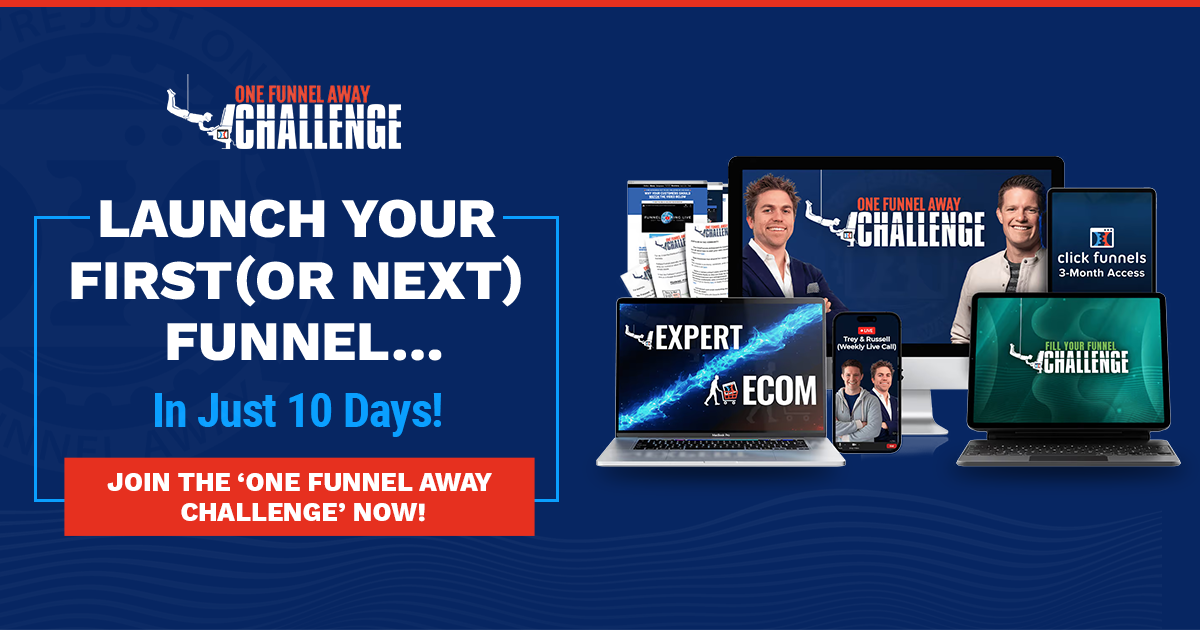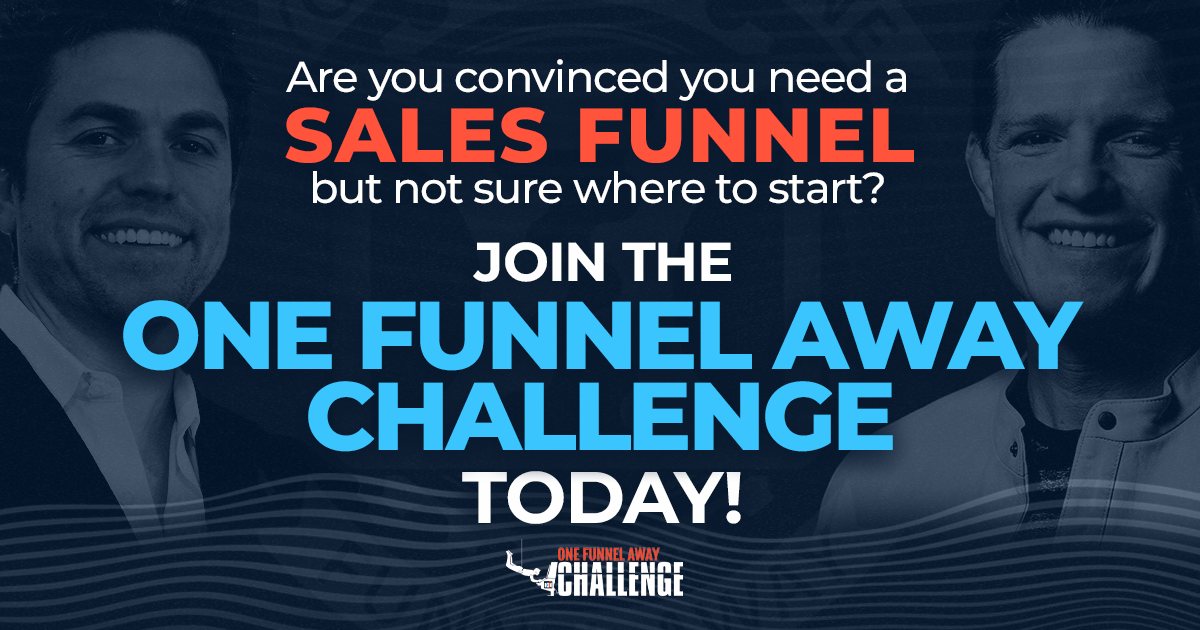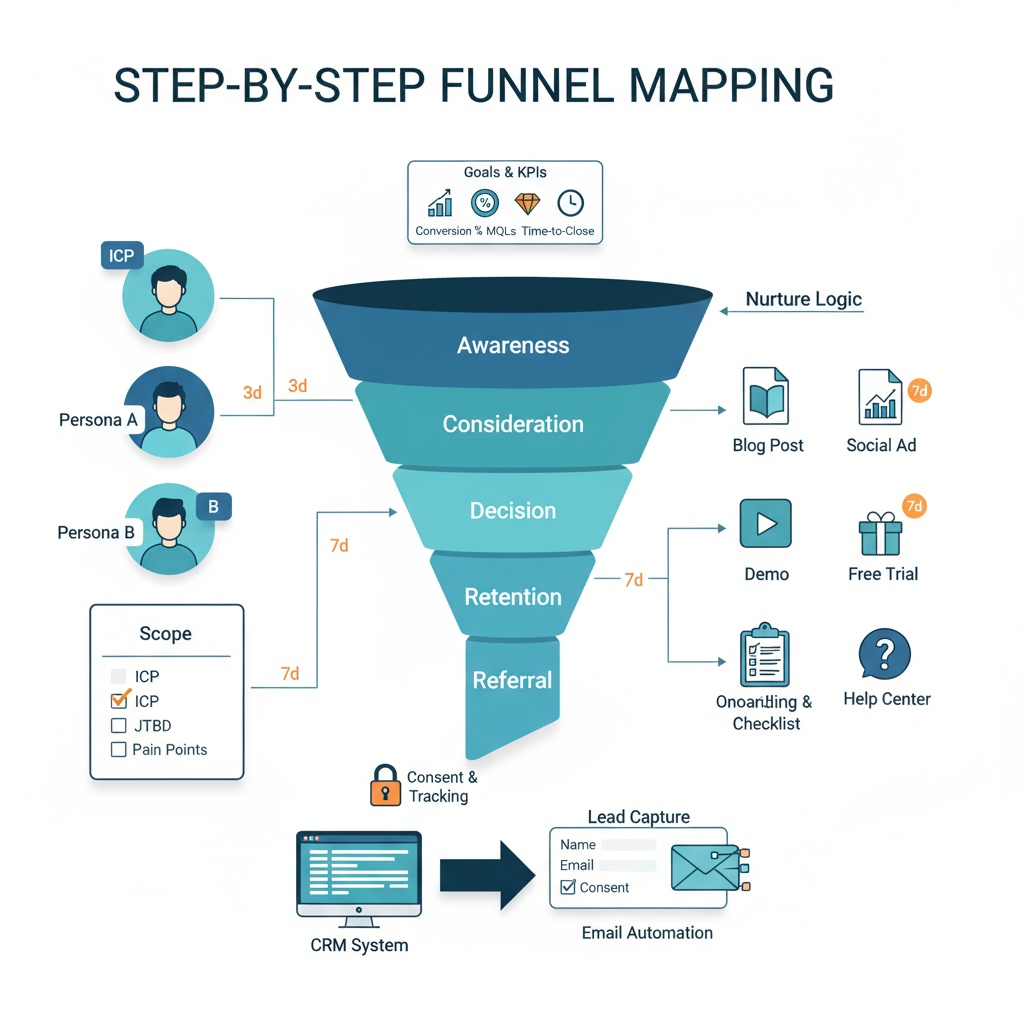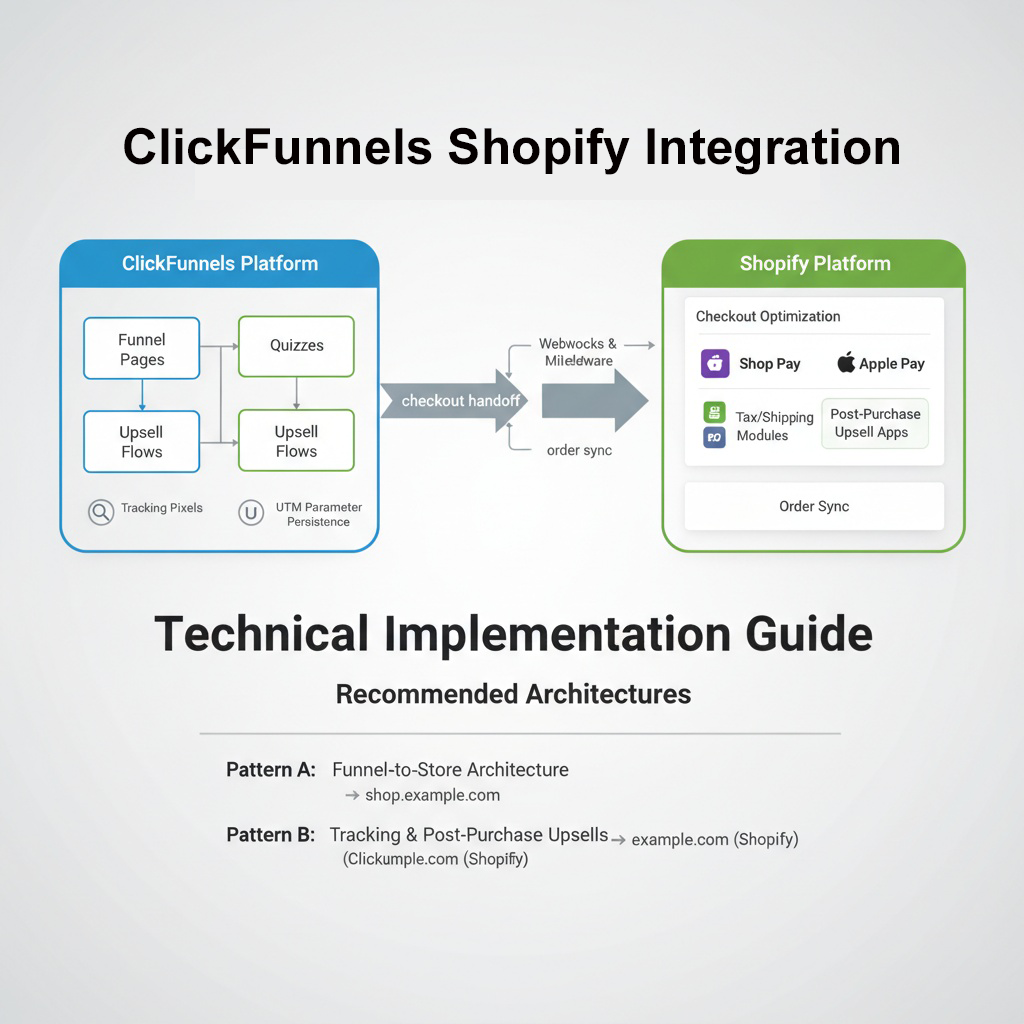ClickFunnels review 2025: Can AI Agencies Scale Faster with 2.0?
AI agencies live and die by conversion velocity. This clickfunnels review cuts through the hype to show how ClickFunnels 2.0 actually performs for teams building high-converting funnels, running webinars, and onboarding clients fast—without stitching together a fragile tool stack.
ClickFunnels 2.0 leans into an all-in-one, funnel-first system: landing pages, checkout flows, upsells/downsells, email automations, memberships, and analytics under one roof. The trade-off? You gain speed-to-launch and proven templates, but sacrifice deep CRM, advanced automations, and large-scale SEO capabilities compared to specialist platforms.
What this ClickFunnels review covers
- ClickFunnels 2.0 features that matter for AI agencies: AI funnel builder, visual automations, memberships/courses, checkout, analytics, and split testing
- ClickFunnels pricing: current tiers, contact limits, free trial, and hidden costs as your list and admin seats grow
- ClickFunnels pros and cons: where it accelerates launches and where it falls short for sales pipelines and content-heavy strategies
- ClickFunnels alternatives: GoHighLevel, WordPress/Elementor, Webflow, Kajabi, and when to choose each
- Practical workflows: lead-gen/VSLs, webinar funnels, productized-service checkouts, client portals, and a 7‑day launch plan
Who this is for
- AI agency founders and growth marketers prioritizing speed, proven funnel frameworks, and integrated payments
- Ops leads who want consolidated tooling for onboarding portals, recurring billing, and basic nurture sequences
- Teams deciding between an all-in-one funnel platform vs a CRM-first or SEO-first stack
Quick take
ClickFunnels shines for productized AI services, training offers, and webinar-led acquisition where rapid deployment and baked-in checkout matter most. If your agency relies on multi-stage pipelines, advanced automation logic, or content-led SEO, you’ll likely pair it with—or pick—an alternative.
ClickFunnels Review: What It Is and How It Works for AI Agencies
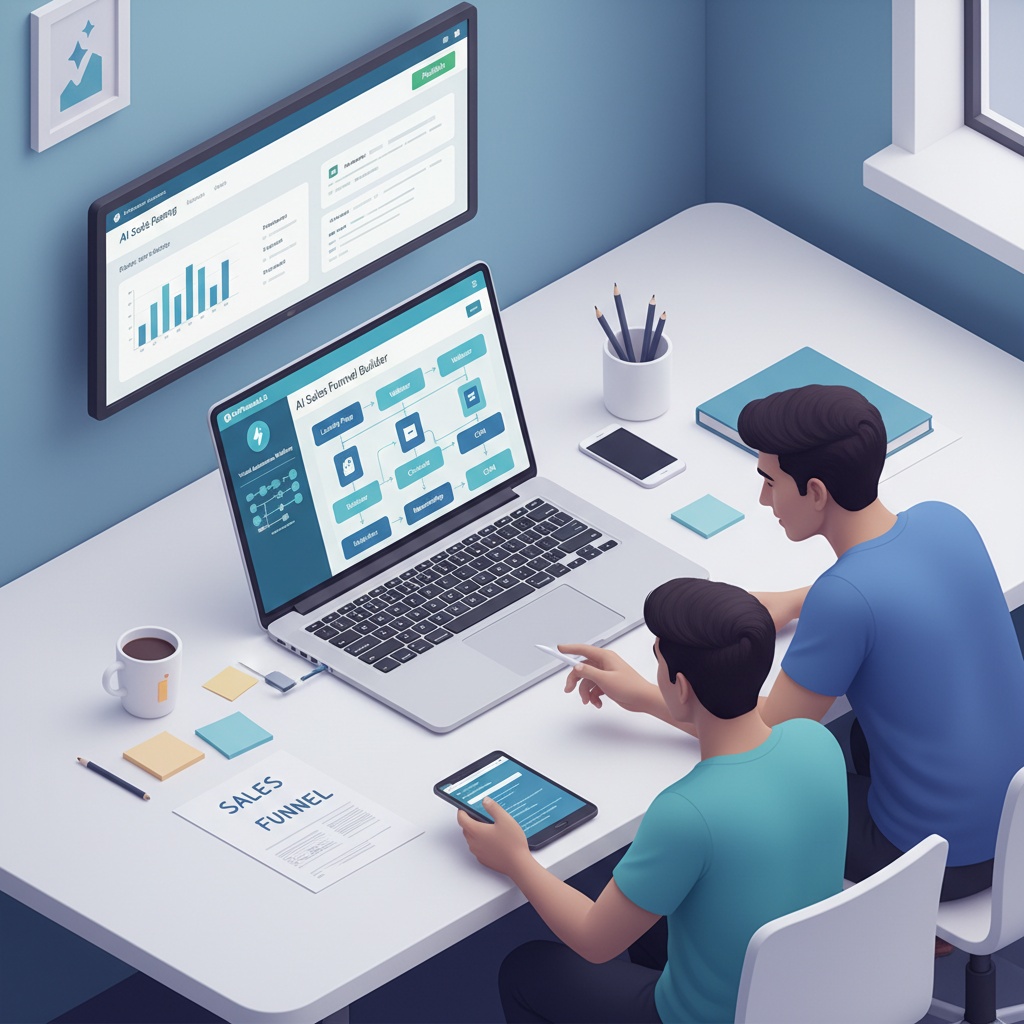
ClickFunnels popularized the funnel-first approach in 2014 and, with the 2.0 update, it now wraps landing pages, checkouts, onboarding flows, email, and basic CRM into one stack that fits an AI agency’s sprint cycles. For teams running automation demos, live webinars, and client training, this integrated builder reduces tool hopping and shortens the time from offer to launch. The 2.0 release adds a modular editor, improved hosting, and a built-in site layer, which helps agencies keep funnel and portal experiences aligned across campaigns. You can see how agencies operationalize this approach in the official resource on AI-focused marketers from ClickFunnels.
AI agency workflows map cleanly to this model because a typical engagement starts with a single promise, not a sprawling site. A lead opts in for an AI audit, attends a demo, and either checks out a productized package or books a call. ClickFunnels 2.0 was designed to compress that journey into a few high-converting steps while keeping payment, access, and nurture inside the same system. If you are coming from WordPress or a frankenstack, the difference is less setup time and less work stitching tools that were never built to be one funnel.
Funnel-first vs website-first for AI services
Most AI services sell best through a controlled sequence, not a freeform site. A funnel presents a single CTA, removes distraction, and provides a path to checkout or call booking. That matters when you sell complex outcomes like RPA automations or chatbots, where clarity and trust signals must be staged.
- Lead magnet plus VSL or audit invitation for cold traffic
- Registration and reminders for a live or evergreen demo
- Order bumps and one-click upsell to lift average order value
- Gated onboarding portal that releases SOPs and training
If your acquisition relies on large-scale SEO, you can still layer ClickFunnels 2.0 pages onto a content hub. The built-in blog is fine for supporting pages, though it is not the best choice for complex, multilanguage content. Teams that care about a deep content footprint should pair with a dedicated CMS and keep funnels where conversion matters most, as noted by BloggingX in its ClickFunnels 2.0 analysis.
ClickFunnels 2.0 Features That Matter for Agencies
The platform’s edge is speed plus integration. The following capabilities are what most AI agencies rely on week to week.
Drag-and-drop funnel builder and reusable sections
The updated editor provides a clean drag-and-drop experience with 100+ templates, universal sections you can reuse across funnels, and mobile previews out of the box. Basic A/B testing lets you test headlines, hero images, or CTA language without extra plugins. This matters when you need to iterate a VSL page in the morning and ship ads in the afternoon.
AI Sales Funnel Builder for rapid setup
The AI Sales Funnel Builder turns a brief into a draft funnel flow in minutes. You enter your offer and niche, choose a template style, and the system scaffolds pages, copy blocks, and design elements so your team edits instead of building from scratch. For agencies juggling multiple client launches, this head start trims days off the calendar and standardizes brand elements across funnels. ClickFunnels highlights this guided builder in its overview of AI marketing companies.
Visual Automation Workflows and CRM basics
Follow-up Funnels create visual sequences for opt-ins, webinar registrants, and new clients. Triggers, tags, and simple logic handle core nurture. The built-in contact manager lets you segment by funnel position and campaign engagement so you can identify where prospects stall. For advanced branching, multi-channel messaging, or multi-team pipeline automation, specialist platforms like GoHighLevel or ActiveCampaign go deeper. The GHL vs ClickFunnels comparisons point out these trade-offs clearly.
Memberships and client onboarding portals
ClickFunnels 2.0 supports courses and gated content, which agencies repurpose as onboarding portals. Upload SOP libraries, project roadmaps, and office hours replays, then grant access at checkout. This reduces handoffs between sales and delivery and gives new clients a clean starting point. Agencies selling productized AI services often pair a fixed-fee setup with a membership space that delivers templates and step-by-step videos.
Checkout, order bumps, and subscriptions
Out-of-the-box Stripe and PayPal, one-click upsells and downsells, and order bumps are built for conversion lift. For AI retainers, subscription billing turns fixed monthly services into a predictable revenue stream. Because checkout is native to the funnel, you do not fight cross-domain tracking or brittle cart integrations. Teams that want to squeeze extra AOV can insert training or premium support as bumps.
Email broadcasting with templated sequences
Broadcast campaigns and evergreen sequences cover the basics for opt-ins, launches, and post-webinar follow-ups. Deliverability is solid for most agency use cases, especially when combined with clear list hygiene and double opt-in. If you manage very large lists or rely on complex engagement scoring, you may combine ClickFunnels with a specialist email platform while keeping the funnel pages in 2.0.
Integrations and AI power-ups
Native integrations include Stripe, PayPal, Google Sheets, Calendly, and Slack. Through Zapier or Make, agencies trigger enrichment, scoring, and proposal drafts the moment a lead opts in. Many teams connect ClickFunnels to OpenAI for instant lead notes or draft proposals, as the ClickFunnels team highlights in its AI marketing guide. This keeps your SDRs and consultants focused on calls while background automations prepare the next step.
Hosting, performance, and security
ClickFunnels 2.0 runs on AWS with global CDN, SSL, and improved mobile speeds. Agencies serving international audiences benefit from faster loads and a hosted setup that removes maintenance overhead. Keep accessibility and page weight in mind when customizing templates so you do not degrade performance on mobile, especially for webinar pages that see heavy traffic.
Practical ClickFunnels 2.0 Workflows for AI Agencies
A few patterns repeat across successful teams. Use the following as modular blueprints you can adapt to your niche.
| Use case | Funnel steps | Core 2.0 features to enable | Conversion notes |
|---|---|---|---|
| AI audit lead-gen | Opt-in page → VSL → call booking | Page editor, A/B tests, Calendly integration | Lead with outcome proof and a short audit checklist |
| Webinar to retainer | Registration → reminders → live room page → follow-up | Visual Automations, broadcasts, SMS via integration | Increase show-up rate with 3 reminder touchpoints |
| Productized chatbot setup | Sales page → checkout with bump → upsell → portal access | Checkout, order bumps, memberships | Offer a training bump to lift AOV by 10 to 20 percent |
| Client onboarding | Thank-you → intake form → portal modules → milestone releases | Memberships, tags, progressive content release | Gate each milestone behind an intake deliverable |
Mini case study: AI audit funnel that books calls
An automation agency offers a 30-minute “AI ROI Audit.” The team deploys a two-step squeeze page with social proof above the fold, a short VSL, and a Calendly embed on the thank-you page. Tags in ClickFunnels segment leads by industry, then a 5-email sequence drives no-shows to rebook. Result: more booked calls without expanding the ad budget and a cleaner handoff to sales.
Webinar pipeline for demos that convert
For a live demo on agent automation, the funnel includes registration, confirmation, three reminders, and an offer page that opens during Q&A. The follow-up series splits by attendance, with a direct checkout path for attendees and a replay for no-shows. Because checkout and access are native, buyers who purchase mid-webinar see portal access instantly, which reduces post-purchase friction.
Onboarding portal that reduces handoffs
After purchase, clients land inside a branded portal with an intake form, a setup checklist, and three short videos. As they complete steps, tags unlock the next module. Delivery teams monitor progress in the membership analytics instead of juggling spreadsheets, which keeps projects moving and clients engaged.
7-Day ClickFunnels Launch Plan for Busy Teams
Day 1: Define a single offer and ideal client. Select a proven template that matches the promise and desired CTA.
Day 2: Build the landing page and VSL section. Create checkout with an order bump that complements the core offer.
Day 3: Draft a 5-email nurture sequence for opt-ins and a separate 3-email follow-up for webinar registrants.
Day 4: Connect Stripe or PayPal, add Calendly, and set Slack alerts for high-intent events. Trigger enrichment with Zapier or Make.
Day 5: Build a membership portal with SOPs, onboarding videos, and downloadable templates.
Day 6: Configure analytics, set at least one A/B test, and optimize mobile load times and accessibility.
Day 7: Launch ads or email campaigns and monitor opt-in rate, booked call rate, and AOV by traffic source.
If you want a structured sprint, the One Funnel Away Challenge provides a useful framework for team execution without overbuilding. For teams focused on inference speed and model cost, align funnel offers and service SLAs with the practices in our guide to maximum performance in AI systems.
Metrics and Optimization Checklist inside ClickFunnels
Track the key steps that move revenue and learn where drop-offs occur. Use simple experiments to fix weak links before adding more traffic.
- Traffic and opt-in: CPC, CTR, opt-in rate by source and audience
- Sales path: booked call rate, show-up rate, close rate, AOV
- Retention: churn and refund rate on subscriptions, portal engagement
- Testing focus: headlines, offer framing, testimonial placement, bonus stack
- Technical checks: mobile performance, form error handling, confirmation email deliverability
A practical rhythm is to test one high-leverage element each week, like headline vs lead magnet positioning, while keeping the rest constant. Use ClickFunnels split tests for page-level changes and simple tags to evaluate segment performance across sequences.
Risk Controls, Compliance, and Client Experience
Data protection is not optional when you collect PII and plug into CRMs. Limit sensitive fields, document consent, and audit email settings for GDPR and CCPA compliance. Keep exports scheduled so contacts, orders, and membership data are backed up, which reduces vendor lock-in exposure.
Accessibility and brand consistency shape client trust. Choose templates with clear contrast, add alt text for key images, and standardize typography across funnels and portals. Before launch, run a device and connection-speed check on your main pages to eliminate slow hero images or heavy scripts.
As you weigh platform fit in your context, the next step is to examine ClickFunnels pricing expectations, the ClickFunnels pros and cons for agency workflows, and how it stacks up against ClickFunnels alternatives you may already use.
Pricing Architecture that Matches Agency Operating Models
Treat ClickFunnels pricing as a capacity plan, not a sticker price. Tiers gate throughput by funnels, admins, and contacts, which directly impacts how many offers you can run, how many team members can collaborate, and how deep you can scale your lists before costs creep. In practice, this means aligning your tier to the number of concurrent campaigns, the headcount touching funnels, and your acquisition velocity.
- Solo founder or small pod with a single flagship offer and fewer than 8,000 list contacts can often live on Basic through the first growth stage. The limiting factor will be the 1 admin seat long before the 20-funnel cap is a problem.
- Pod-based delivery with media or events and multiple SKUs usually tips to Pro. Five admins cover a strategist, a copywriter, a designer, a media buyer, and a client success manager. The 100-funnel limit supports testing new offers without spring cleaning every quarter.
- Multi-brand or multi-region structures, or agencies packaging education programs with recurring launches, trend toward Funnel Hacker or legacy enterprise arrangements for support and governance reasons more than raw limits.
If you audit the total cost of acquisition tooling across a year, the largest hidden cost is time. A meaningful clickfunnels review should quantify the wage spend you avoid by not stitching plugins and hosting. Using the Pro tier at 297 monthly, a two-hour weekly time saving at a blended internal rate of 90 already clears the subscription cost, before any increase in conversion rate. Combine that math with your baseline opt in and close rate to set a break-even target for the 14-day trial.
For current plan specifics, consult the official overview on ClickFunnels pricing and the independent breakdown by BloggingX which details feature caps and caveats. Both perspectives help you avoid surprises as your list size and admin needs grow.
Precision Cost Controls That Keep Margins Intact
You can hold margins without downgrading capability if you install a few guardrails early:
- Contact hygiene: run weekly list scrubs for bounces and inactivity, and segment high engagement cohorts. Keeping your active audience under tier caps delays a plan jump and lifts deliverability.
- Campaign calendar discipline: archive retired funnels each quarter to stay under funnel limits, then clone the best performers when launching adjacent offers.
- Hybrid email strategy: keep transactional, webinar reminders, and short nurture inside ClickFunnels, and push newsletter-heavy content to a specialist ESP when send volume explodes. This keeps your core stack simple and your cost per send low.
- Seat policy: assign the five Pro seats to roles, not people. Contractors can work through a production manager’s account for discrete sprints to avoid constant seat churn.
When you present the budget to leadership, show total cost of ownership compared to a WordPress plus plugins stack. The alternative may look cheaper monthly, yet requires ongoing maintenance, plugin management, and performance tuning that quietly consumes 5 to 10 hours a month. The more launches you run, the more that overhead compounds.
Advanced Deployment Patterns with ClickFunnels 2.0 Features
Speed is obvious. Precision at scale is where ClickFunnels 2.0 features pay off for AI agencies with complex offers.
- Universal sections as a design system: build your brand header, trust strip, and post-purchase nav once, then push updates across hundreds of pages in minutes. This acts like a lightweight design token system and maintains brand coherence during rapid testing.
- AI Sales Funnel Builder for prototyping: use it to generate three divergent funnel architectures for the same offer, not for final copy. You will get faster to a shortlist of flows to test, then replace the AI draft with your research-backed messaging.
- Personalization via URL parameters: pass persona or channel tags into the funnel and conditionally swap hero blocks or social proof. You get quasi-dynamic pages without custom code.
- Conversion analytics layering: keep native stats for quick iteration, then mirror key events into GA4 or a server-side tag manager for reliable attribution. This dual approach lets you act quickly while retaining clean reporting for paid media decisions.
- Post-opt in enrichment: trigger a webhook to your automations platform to run firmographic or technographic lookups, score the lead, and return a tailored onboarding path. Agencies selling AI implementation win deals by reducing time to relevance.

These patterns reduce rework and amplify testing velocity, which is where compound conversion gains accumulate.
Addressing the Cons Head On, With Workable Workarounds
Every platform makes tradeoffs. The difference is whether you have a playbook to mitigate them.
- CRM depth: if your pipeline demands multi-stage handoffs and SLA tracking, pipe new contacts into GoHighLevel or HubSpot with two-way sync on status and meetings. Use ClickFunnels pages for the front end, then let your CRM govern sequences, tasks, and deal forecasting. See the GoHighLevel comparison by Fahim AI and the detailed agency-focused analysis for automation ceilings.
- Content and SEO scale: run a hybrid architecture with WordPress on root domain for content, and ClickFunnels on a subdomain for acquisition funnels. Manage canonical tags, internal links, and sitemap consolidation so your content cluster owns rankings, while your funnels focus on conversions.
- Design control: create a Figma library that maps to a set of universal sections. This gives you predictable spacing, typography, and color tokens. High-fidelity hero sections can be exported as assets, then reconstructed with native elements to keep page speed high.
- Vendor lock-in: implement quarterly exports of contacts and orders, document funnel structures in a living SOP, and keep a mirrored version of your highest performing pages in a landing page tool like Unbounce as insurance. Migration stops being a cliff when you treat it as a low-grade background task.
If you need a deeper dive into platform strengths and gaps, the independent ClickFunnels review by Learning Revolution and the EmailToolTester roundup of funnel tools both provide outside-in assessments that surface meaningful constraints.
Scenario-Based Tool Choices Instead of Generic Alternatives
Rather than listing ClickFunnels alternatives, pick the right engine for your operating model:
- Client services first, productized upsells second: ClickFunnels for acquisition, GoHighLevel for sales process and ticketing. You get funnels that convert now, plus retention infrastructure for longer deals.
- Media-led SEO acquisition: WordPress with Elementor or a lean theme for content velocity, CartFlows or a similar checkout layer for commerce, and a slim set of ClickFunnels-built squeeze pages for launch sprints.
- Brand-driven enterprise engagements: Webflow for the primary site to satisfy design stakeholders, with embedded or linked ClickFunnels checkout experiences for workshops, training, or events where speed matters more than pixel perfection.
- Education-heavy agencies: Kajabi or Kartra to run cohorts and curriculum, with ClickFunnels as the top-of-funnel testing ground for hooks and order bumps that feed your programs.
If you want comparative nuance on automations and multi-tenancy for agencies, review the GoHighLevel vs ClickFunnels analysis from GHL Services Playbooks. For a broad scan of current sales funnel software, EmailToolTester’s guide is useful for a quick capabilities map.
Pricing Tactics That De-Risk the First 60 Days
Use the 14-day free trial to validate conversion economics, not to build a museum of pages.
- Define a single core metric such as call bookings per 100 visits or checkout completion rate. Everything else is secondary.
- Launch two funnels that differ on offer structure, not button color. For example, audit plus workshop vs implementation plus onboarding.
- Set a clear upgrade trigger. If you hit 70 percent of the contact cap and need two more collaborators, move to Pro. If not, stay lean.
- Model ROI with your real list. At a 2.5 percent opt in, 30 percent show rate, and 25 percent close rate on qualified calls, back into revenue per 1,000 visits. Use this to decide if the Pro tier is self-funding inside one month.
For a practical walk-through of funnel build velocity, the One Funnel Away Challenge overview can help you timebox execution and keep scope tight for your first sprint.
Benchmarks, KPIs, and Diagnostics Specific to AI Agencies
AI service buyers evaluate thought leadership, trust, and proof of outcomes. Your funnel diagnostics should reflect that.
- First-touch to booked call in under 7 days is a healthy benchmark for implementation offers. Longer nurture works better for training or retainers.
- Proof density on key pages correlates with lift. Add case figures, stack bonuses, and screenshots of automation dashboards. Run A/B tests on proof blocks, not only headlines.
- Webinar show rate is the heartbeat for education funnels. Aim for 35 percent live attendance with SMS reminders managed through your CRM, while ClickFunnels handles registration frictionlessly.
- Post-purchase time to first deliverable under 48 hours reduces refunds. Use a membership portal to deliver onboarding tasks and a quick win asset immediately.
If you also operate inference-heavy products or tools, align your funnel SLAs with system performance targets. The guide to maximum performance in AI systems lays out pragmatic ways to balance latency, accuracy, and cost so your marketing promises match delivery.
Credible Counterpoints to Stress Test Your Choice
It is fair to argue that a modular WordPress stack costs less and is more flexible, or that GoHighLevel’s automation depth makes ClickFunnels redundant. Both critiques hold in the wrong context. The way through is to anchor on speed to validated revenue, governance needs, and the number of concurrent experiments you will run each quarter. When experimentation volume is high and offers are evolving, the convenience premium pays for itself. When content scale, localization, or CRM complexity define your roadmap, a hybrid or alternative stack is often the sharper choice.
For current platform trends and market sentiment, review the BloggingX assessment as well as the ClickFunnels perspective on AI marketing companies to gauge how the roadmap aligns with agency realities. The FetchFunnel ROI explainer offers a simple conversion uplift model you can adapt to your own funnel math.
With these levers and checks in place, the next logical step is to set a two-week proof of value that answers a single question for your leadership team: does this stack improve speed to launch and conversion per visit enough to warrant the plan you intend to buy.
Conclusion
Ultimately, this ClickFunnels review shows a clear verdict: for AI agencies that value launch velocity and proven funnel architecture, ClickFunnels 2.0 delivers. You get a unified builder, integrated checkout and memberships, webinar flows, and enough automation to capture, nurture, and convert—without wrestling a fragile stack.
The boundary lines are unmistakable. When advanced CRM, multi-stage pipelines, or premium, SEO-heavy web design drive your growth, ClickFunnels alternatives take the lead—GoHighLevel for sales operations and automations, WordPress/Elementor or Webflow for brand-first, content-rich experiences. Use the right tool for the job and you eliminate friction before it starts.
On ClickFunnels pricing and capability, the math favors outcomes. A single well-optimized funnel justifies the subscription; the 2.0 features reinforce its edge—speed with sensible defaults—while limitations stay predictable and easy to plan around. That is the practical balance of pros and cons that matters in execution.
Act now: start the free trial, run the 7-day launch plan outlined above, and ship a complete lead-to-revenue journey—opt-in, nurture, booking, checkout, and onboarding—this week. If your model demands deeper automation or cross-team sales control, pair your funnels with a dedicated CRM without slowing deployment.
In conclusion, choose the platform that matches your revenue engine, execute decisively, and iterate against your KPIs. You now hold the criteria, trade-offs, and next steps to build faster, convert higher, and scale with confidence.
Frequently Asked Questions
An automation assessment is a time-bound evaluation that measures readiness, identifies high‑impact processes, and produces a prioritized roadmap. An automation strategy is broader and ongoing—it sets your long-term vision, operating model, funding approach, and governance. The assessment feeds the strategy with hard data and a sequenced plan, ensuring your automation and AI in the workplace efforts deliver tangible outcomes, not just intentions.
A focused assessment typically runs 6–12 weeks, aligned to the 90‑day roadmap. Involve a cross‑functional core team: process owners, IT/architecture, data/privacy, risk/compliance, finance (for ROI), and change management. Keep executive sponsors engaged through structured check‑ins so decisions on scope, prioritization, and funding happen fast.
Anchor your model to a clear baseline: volume, FTE effort, cycle time, error rates, and compliance incidents. Include full TCO (licenses, infra, build, model training, support) and all benefits (hours saved, quality uplift, throughput, risk/fines avoided). Calculate payback, NPV, and IRR, and run sensitivity at ±20–30% on benefits and costs. Typical quick‑win automations pay back in 3–9 months; AI use cases may span 6–18 months depending on data prep and model complexity.
Be cautious with processes that are unstable, have high exception/judgment rates, or rely on unstructured or low‑quality data you can’t remediate quickly. Also avoid workflows under regulatory scrutiny without strong auditability or human‑in‑the‑loop controls. Stabilize and standardize first; then revisit as candidates once variance and data issues are addressed.
You’ll need process metrics (volumes, handle time, exceptions), system access for task/process mining or screen capture, and data dictionaries to assess quality and structure. Confirm governance early—who approves data use, privacy constraints, and security reviews—so discovery tools and interviews can run without delays. Clean, accessible data accelerates both automation and ROI AI estimates.
Match the tool to the work pattern. Use RPA for UI-driven, rules-based tasks across legacy apps; workflow/BPM for multi-step processes with approvals and SLAs; iPaaS for API-centric integrations; AI/ML/GenAI for classification, predictions, document understanding, and unstructured text. When in doubt, start with the lowest-complexity tool that meets requirements, then add AI components where they raise value without spiking complexity.
Top risks include model risk/bias, security/privacy gaps, and orphaned automations without ownership. Govern with a lightweight but firm framework: risk tiers, design standards, change control, audit trails, human‑in‑the‑loop for sensitive steps, and rollback playbooks. Establish a COE to enforce controls while enabling speed, with clear RACI for build, run, and incident response.
Expect shifts in task mix rather than wholesale job loss: repetitive work declines while exception handling, analysis, and customer work increase. Pair automation with role redesign and reskilling/upskilling so employees move up the value chain. Communicate early and often, measure adoption, and celebrate wins tied to CX/EX improvements to reduce resistance and sustain momentum.
Yes—use the assessment to close gaps while delivering a quick win. Start with a stable, rules-based process and a small, cross‑functional team. Typical pilot budgets: $20k–$75k for RPA/workflow quick wins; $50k–$200k for AI pilots depending on data readiness. Keep scope tight, measure benefits weekly, and reinvest early returns into capability building and governance.
Reassess quarterly to refresh the pipeline with new candidates and incorporate lessons learned. Track leading KPIs—adoption, automation health/error rates, and SLA adherence—and lagging KPIs—FTE hours saved, cycle time, defects, and compliance outcomes. Tie KPI dashboards to the original business case so ROI and value realization remain visible and defensible.


